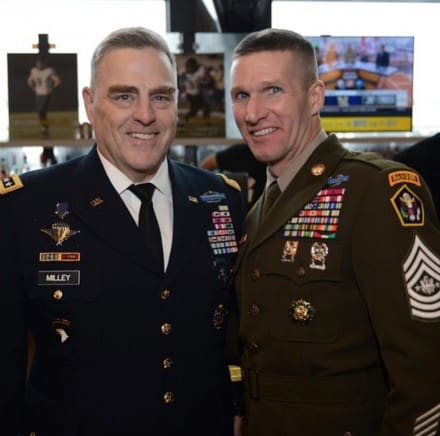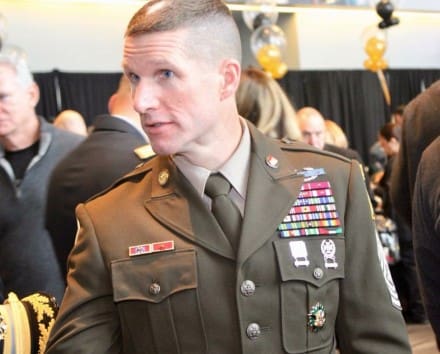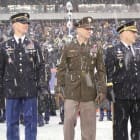GEN Mark A Milley is the finest Chief of Staff our Army has seen in recent memory. He gets it. The story goes that earlier this year he sat all of the Army’s Program Executive Office’s and told them that the acquisition system is taking too long. PEOs are too focused on the process and not on getting the product to the troops. It’s no coincidence that late last year we began to see numerous “directed requirements” from senior Army leaders, instructing the PEOs to figure out how to procure certain capabilities. In some cases, they are pieces of equipment which will be used in new ways and in other instances they are items already in use by SOCOM. One of those directed requirements plays a serious, behind the scenes role, in GEN Milley’s testimony.
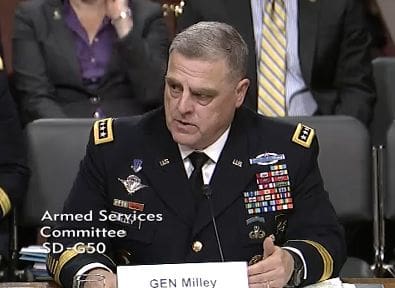
After GEN Milley’s testimony on May 25th before the Senate Armed Services Committee on the state of the Army, a couple of press reports detailing what GEN Milley said regarding the direction of Army Small Arms caught my eye. As they contained some nonspecific information, I decided to share what he actually said in his testimony.
Below is his prepared testimony:
Our Soldiers remain the backbone of every Army capability, and our infantry units must be equipped with modern weapons. We request support to increase readiness by completing M4A1 Carbine pure-fleet fielding, developing Next Generation Squad Weapons, procuring anti-tank weapons, such as the Javelin and tube-launched, optically tracked, wire-guided (TOW) anti-tank guided missiles, and beginning procurement of the Lightweight Command Launch Unit for Javelin. Additionally, we seek congressional support for a variety of simulators and virtual training devices to significantly increase the repetition and experience base of our Soldiers and leaders at the tactical level in individual, collective, squad, and small unit operations given intense, complex, combat scenarios.
As you can see, the Army’s official budget position is that it wants to continue fielding the M4A1 (which is in 5.56mm) and develop Next-Generation Squad Weapons. What should raise everyone’s eyebrows is the emphasis on anti-tank weapons. GEN Milley has been very vocal about the Russian threat, stating, “The greatest capability remains Russia.” However, he also acknowledged that North Korea is the most immediate threat.

During the Q&A with the committee, GEN Milley was a bit more forthcoming about threats, countering them, and the M4. Although, he often spoke in generic terms, he did offer a couple of revelations.
Senator Angus King (I, ME) asked GEN Milley specifically about the M4 and whether the Army needed a new weapon. GEN Milley responded that the Army has concerns about body armor penetration. He said, “We recognize the 5.56mm round, there is a type of body armor it doesn’t penetrate. We have it as well. Adversarial states are selling it for $250.” He went on to say, “There’s a need, an operational need. We think we can do it relatively quickly,” and went on to say, “The key is not the rifle, it’s the bullet.” GEN Milley sated that they’ve done some experimentation at Ft Benning and they have a solution. When asked by Sen King if it would require a new rifle, GEN Milley responded, “It might, but probably not.” GEN Milley went on to explain that the “bullet can be chambered in various calibers, it can be modified to 5.56, 7.62.” We believe he is referring here to the Enhanced Performance Round projectile found in the M855A1.
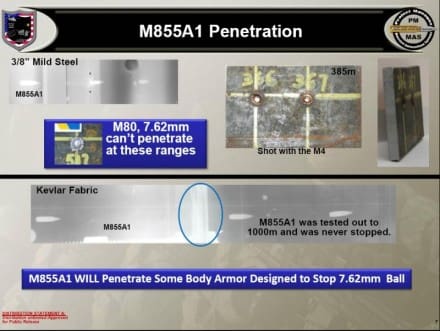
GEN Milley specifically mentioned a 7.62mm round later in his testimony to Ranking Democrat Jack Reed of Rhode Island when asked if this new cartridge would be interoperable with NATO. GEN Milley stated he believed it was, but would prepare a formal answer for the committee. GEN Milley also informed Senator Reed that the new 7.62mm round could be in production within a year or two. GEN Milley went on regarding the choice of 7.62mm, testifying, “This idea that in the Army, that everyone needs the same thing all of the time is not necessarily true. There are some units, some infantry units, that are much more likely to rapidly deploy than others and conduct close quarters combat, that we would probably want to field them with a better grade weapon that will penetrate this body armor that we are talking about.”
While he didn’t come out and say it, based on what we know has been going on, we believe he meant the M80A1 paired with the H&K G28. This testimony falls right in line with what we heard months ago and wrote about in early April regarding Army interest in fielding a 7.62mm Interim Service Combat Rifle. Additionally, there is currently a Four-Star level directed requirement for 6,069 G28s configured as Squad Designated Marksman Rifles to be fielded to the BCTs. The 7.26mm NATO G28, which is a Squad Designated Marksman Rifle variant of the Heckler & Koch 417, developed for the German Bundeswehr, came to the attention of the Army thanks to its selection as the M110A1 Compact Semi Auto Sniper System. Additionally, the Army is quite satisfied with the performance of the M855A1 cartridge and by extension, its 7.62mm counterpart, the M80A1.
As we mentioned last week, there are multiple weapon solutions, currently fielded and readily available. The services just need to make a decision and move forward. Based on what’s currently on the table, they will field a “Better” capability than what they currently have at their disposal. Even GEN Milley agrees. When Senator King asked him if there was an off the shelf rifle which could be an upgrade to the M4, Milley replied, “Yes, there are several out there.”
Bottom line, the Army is asking for money to pure fleet to the M4A1, but it’s also letting Congress know that it’s open to a new service rifle. However, as the testimony went on, this position took an interesting turn.
Senator Joni Ernst, (R, IA) echoed Senator King’s concerns about the M4 and mentioned that it does not penetrate Russian body armor. A retired LTC, she served in the Army Reserve and Iowa Army National Guard as a logistics officer; commanding the 185th Combat Support Battalion at Camp Dodge. She stated there is a need to prioritize small arms in this year’s National Defense Authorization Act.
Senator Ernst asked if that, once the Army has settled on a caliber, would prefer a new, purpose-built weapon or an off-the-shelf solution. GEN Millie responded, “I don’t know that the two of those are mutually exclusive. There are systems out there today, on the shelf, that with some very minor modifications could be adapted to munitions that we’re developing at Fort Benning that could be used to penetrate these SAPI plates that our adversaries are developing.” He went on to amplify his answer, “It’s not necessarily an either or proposition on that one. I think there’s weapons out there that we can get, in the right caliber, that can enhance the capability of the infantry soldier.” Senator Ernst was pleased to hear that MCOTS solutions were an option in light of potential savings.
Everything we are seeing happen on the acquisition side demonstrates the Army’s interest in the G28, but during this next round of questions, there was an unexpected answer. Senator Ernst brought up MG Scales’ testimony to the Airland Subcommiitee which we recently shared. She mentioned MG Scales’ testimony, referring to a weapon which could fulfill the role of rifle and light machine gun, asking which is more important. GEN Milley responded that they complement one another. Now, here is the bombshell. GEN Milley said, “I think what’s he’s (MG Scales) talking about is the Marines are adopting the M27. We’re taking a hard look at that and are probably going to go in that direction as well, but we haven’t made a final decision on it. Infantry squads, infantry platoons they’ve got to have an automatic weapon for suppression. They’ve got to have the individual weapon as well. So you need both, it’s not one or the other.”
Once again, the budget priorities of M4A1 and Next Generation Squad Weapon follow the spirit of the service chief’s testimony. What’s more, the comments regarding the 7.62mm cartridge follow what we see going on behind the scenes. However, the revelation that the Army is considering the 5.56mm M27 is quite a surprise considering he mentioned a new 7.62mm round earlier. Perhaps he means the M27 as a future 5.56mm weapon for non-Infantry forces, as he was quite specific that the Army doesn’t intend to pure fleet the 7.62 solution, but rather field it to Infantry formations.
Regardless of specific systems requested, our opinion is that the US military’s greatest challenge is the Budget Control Act of 2011 which has hamstrung efforts to not only modernize, but just recapitalize capabilities worn out by over a decade of constant warfare. To make matters worse, continuing resolutions stymie efforts to spend consistently through a budget cycle, resulting in last minute purchases. Additionally, over the past eight years, the Army had to reduce end strength by over 100,000 Soldiers. This reduction included removing 17 brigade combat teams from the Army. Considering we go to war with the Army we have, these cuts were short sighted. When the Army talks about the ability to “Fight Tonight”, there’s no way to develop a replacement for that lost capability overnight. It will take years to rebuild what the last administration dismantled. GEN Milley testified that it would take three years to but a Brigade Combat Team together from scratch. As a hedge, the Army plans to stand up five Security Force Assistance Brigades in the near-term, which are made up of leadership structure, essentially chains of command, with no line troops. They will be used to advise allies and serve as a standing force structure for new troops to fall in on during mobilization, similar to the COHORT units of the 80s. Such plans withstanding, concerns of a “Hollow Army” are valid and there are those who are comparing our current situation to the early 80s recovery from the damage done to the military by the Carter administration. Unfortunately, the President’s budget calls for no increase in end strength and current operational demands are consuming readiness as fast as the Army can produce it. This means that as quickly as Army units are deemed at the highest readiness level, they are committed to use, which will degrade their readiness. With this challenge, it’s no wonder modernization has taken a back seat.
All of the services have a lot of rebuilding to do, in terms of both personnel and equipment. Just as daunting a task is to build capability for future threats. We have to be able to do both, simultaneously. Hopefully, Congress will have the wherewithal to consistently appropriate the funds needed to ensure America’s Army remains the world’s most dominant land warfare force.


